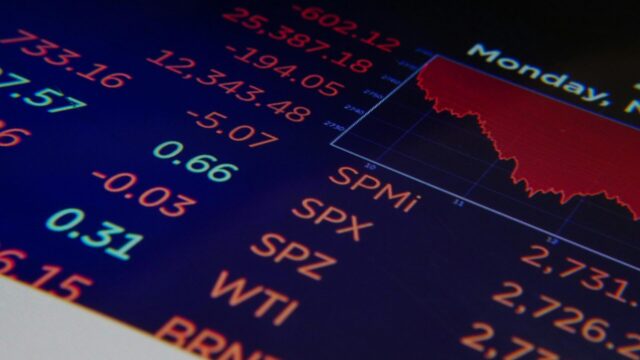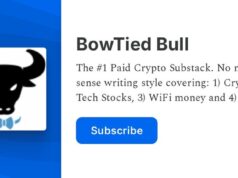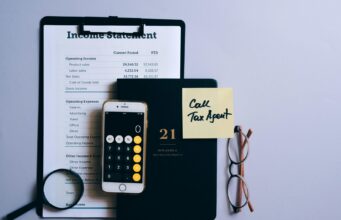
Lately, we’ve been considering a “permanent portfolio” which simply means a new way to invest that avoids large ups and downs. Since we started this blog about 7 years ago we suggested dollar cost averaging all of your money into the S&P 500 if you are not rich yet (after the basic cash buffer is made). That is still a good strategy if you’re young but we recently stopped investing in the stock market (end of last year) and have simply been moving to cash/crypto since then. Why? Well if you haven’t been working/selling items for your own company since 2008… it means you haven’t seen a recession. Recessions are the best time to get rich since everything goes “on sale”. Long story short, our 2021 recession expectation (rough range), is the last recession we’re attempting to “time”.
General Principles: Before jumping into what a permanent portfolio would look like, we have to explain why it’s possible to create one. The reality is that anyone who is a millionaire by 30, will have high income/cash flow… otherwise they wouldn’t have made it to a million dollars so quickly. This part is usually confusing to someone with a normal income since your monthly cash flows can quickly equal a year of savings for median wage earners. What does this all mean? It means you can *move* your allocation without actually selling any assets. As a simple example if you have a million dollars equally split between four asset classes ($250K each), but you are able to save $25K in a month… By simply putting it all into one asset class for two months you have “rebalanced” your portfolio by a few points (it would represent 28.5% instead of 25% in just 2 months).
This is a significant advantage for you (if you’re in this situation). Said a different way, one part of the entire portfolio could go down a full 10% ($250K goes down to $225K)… But you could simply take all your earnings for a month and toss it into the basket to rebalance to 25% (all else equal). This example alone should explain why we think individuals should not waste time looking up “the next big thing” until they are officially rich. If you simply close your eyes and buy the major asset classes (stocks/bonds/real estate/crypto/gold), you’re going to do fine and are better off making large amounts of money before attempting to time out your purchases more. Your monthly purchase will equal your old annual purchase if you focus on becoming rich the right way (sales, ownership or tech).
A Recession is Simply Opportunity: If you’re successful the chances of being employed/making decent money during a recession is quite high. Why? Well this is how life works. Recessions are painful for most, yet the ultra successful stay insulated. They are able to find employment since they are actually delivering value (unlike most within the Company or Industry if you run your own business). This gives you a chance to buy talent at a discount (high quality people who were cut due to office politics vs. performance) and it gives you a chance to buy assets that are deemed “too risky” even if the business model is completely unchanged long-term. A good example of this is when the housing bubble crashed, that created a “cloud of worry” around rental income and people decided that homeownership was “not for them”. Of course… this ended up being the best possible time to buy since people still need somewhere to live over the next 50 years. In short, watch the news closely during the down turn (seriously!) and if they say an industry is “forever changed and this time it is different” look into that industry because it usually isn’t. Funny enough this even worked during the tech bust, when the view was that the values were forever going to be deflated, meanwhile the top companies that actually survived and thrived are worth significantly more than they were back in the 2000-2001 period.
A New Permanent Portfolio: The world continues to change rapidly, about 15 years ago smartphones were not pervasive and there was no such thing as crypto currency. So the way we think about a “permanent” portfolio is to have sub-segments along with a ‘alternative class” where you buy small amounts of any emerging future company/asset class. Who knows, maybe the next best investment will be real estate on another planet (seriously, anything is possible over a 50-100 year frame). The chances of this happening are slim but being prepared for structural shifts is the whole point of a permanent portfolio. The second most important piece of a permanent portfolio is “no stress”. You’re creating a permanent portfolio to simply increase your net worth over time and no longer think about money in the future.
Pause for a Second: Before any confusion arises, everything outlined in Triangle Investing is till valid. If you’re not rich yet, you’re better off just dollar cost averaging into stocks, real estate and crypto. When we refer to “dollar cost averaging” into homes, it means you’re just taking a portion of your net worth every year to buy some sort of rental property (or any other asset that is real estate focused). This post is meant for two different strategies we’ve been mulling on once you’ve hit your financial independence hurdle. We have to emphasize that point. This post is for people who are looking for new ideas once they are set and there are really two clear paths: 1) a permanent portfolio and 2) a strategy to get your plan A. We can’t think of a third plan so it really turns into a permanent portfolio and a high risk plan A.
Permanent Portfolio
Since retirement makes no logical sense as your brain erodes from lack of use, we assume that you’ll always be doing something for money. If you follow our plan for a million dollars within 10 years, the math suggests that you will eventually be worth ~$10M in the future due to compounding and continued effort (you didn’t get to a million with a low income!). This is a great set up but does not answer the obvious question “what type of life do you want to live”.
If you are not interested in driving lambos and traveling on private jets or first class at all times, the permanent portfolio is likely better for you. This is similar to what is known as an “equal weight” portfolio. There are many other names for it including the “Quattro” strategy. The basic premise is as follows: there are 4 clear asset groups for active management – 1) stocks, 2) bonds, 3) cash and 4) gold. Remember this is based on legacy portfolio management theory and does not include new markets like crypto currency.
How does it work? You simply put 25% of all of your income into each of the four groups. At the end of the year (or twice a year), you sell the winners and re-buy some of the losers to rebalance at 25%. Since gold goes up during recessions (historically) and stocks go up during upturns, this naturally allows your portfolio to grow over time. Will you get rich off of this? No. Will you go broke off of this? No. This is the point of the strategy as it reduces risk for you over long periods of time. Also. This strategy is also perfectly fine if someone does not want to think about investing while they grow their business.
Fast Forward to 2019: At this point the world has changed quite a bit. While the equal weight strategy will likely work, we think it makes more sense to have something that is much more “future friendly”. This means you’re going to have more assets to actively reduce the chances of missing out on the “next big thing”. People who missed out on Bitcoin at prices below $1,000 for example are still trying to play catch up. So we’ve come up with a percentage that should work as a new “permanent portfolio” for the next 50 years or so and it looks something like this: 25% Stocks, 20% bonds, 20% Cash, 20% Gold, 10% Crypto and 5% alternative assets. The emphasis here is that this balance refers to all of your invested assets and does not refer to real estate since we view that as a separate entity entirely (since you can have forced returns where you actively fix it to improve the performance). For those that want to nit-pick, what usually happens is that the person will own a couple of properties (one he lives in) and one or two rentals at minimum.
Rebalancing: Since our portfolio is a lot more complicated when compared to the standard portfolio, we would only rebalance once a year. When you think about it this will also allow you to “ride your winners” longer and also forces you to sell the big winners at higher levels. Selling and rebalancing is costly not just in fees but time as well (tax issues also occur due to1 year holding periods). The losers in the portfolio are unlikely going to impact you since the volatility is tied to the crypto, stock and alternative asset pieces which are a smaller chunk of the overall portfolio.
Final Note on Permanent Portfolio: The biggest downside of the permanent portfolio is that you’re not actively learning about new things. You’re creating a portfolio that will go up over time and makes sure that you will be able to slightly increase your spending for the rest of your life. The biggest upside is that you are free to do anything you like with your free time: spend hours on the beach, travel, sleep in, work less and read less. While this sounds like hell to people who are still trying to work their way to the top, a permanent portfolio allows you to sit back and decide on what you would like to do next. So. Remember this set up for the future since its a good way to put “time on hold” if you ever need to.
Aiming for a Big Plan A
The second idea we’ve been ruminating on is the “Plan A” portfolio with extra money. One of the main items from this blog is that we’re recommending a basic strategy to get modestly rich that will work for anyone. It does’t require immense talent it just requires a lot of work and reflection. What are you good at, find that skill, work long hours for the first 3-5 years of life and hit your basic financial independence number. Only people who absolutely “must” be worth $100M+ would not follow this plan. They would go down the full ownership route on day one as that is the only way to really get rich (starting and running a company).
Investing for Plan A: Making the numbers up we assume that you’re worth $5 million. At this point you can generate around $250,000 pretty easily with just 5% returns. That’s more than enough money for the vast majority of people but lets go ahead and say that you have bigger goals in mind. If you want to try and make another leap the only way to do so is through serious concentration. Mainstream financial advice always says to “diversify” but the people who get rich do so by selling their companies and owning a large chunk of it.
What does this mean? It means that your alternative strategy is to simply go all in and swing for the fences. If you already have $5 million and that is enough for you personally, then it is time to go ahead and take all your future income and put it into risky investments. This is not something “mainstream” advice will tell you since they always go with the lower risk answers.
Venture and Angel Investing: You guessed it. Getting in early is the only real way to get outsized returns. One of the most important changes over the past 10 years is that individuals can now invest in early stage companies rather seamlessly. You don’t have to wait for the Company to go public and you don’t have to wait for a major round. All you need to do is make contacts and offer a large investment in the first fund raising round. The key here is that you need to be right at least once. If you’re right once with a large initial investment of say $100,000 (a large sum for a first round raise), you can get a return that is well in excess of 10x.
As you can imagine… This is the direction we’re choosing. This is not a recommendation as there is nothing wrong with a permanent portfolio or a 10% annual return on all of your money. We’ve reached a point where working an extra year and saving it into index funds, or cash/bonds doesn’t make any impact to daily life. What is the point in increasing your monthly spending by around $500-1,000 (again making the number up). You’re only going to live a different life if you’re able to double or triple your monthly spending and at some point you will hit scale issues. Adding 50% to multi-million dollar portfolio with work is much harder than adding 50% when you only have a couple of hundred thousand dollars to your name.
Unsurprisingly, this change in strategy is slowly bleeding into the content on this blog. Prior to 2016/2017 we focused a lot more on compounding investments to make sure there was enough buffer room to sustain a recession. We’re past that now. A 50% drop in the stock market, bond market and real estate market would not impact our lives. In fact nothing would change except the numbers on the screen since a 50% decrease in cash flow still allows for financial independence. Many will say that is a brag which is fine but it’s more of a “change in situation”. Take a step back and ask yourself, if you knew that someone would hand you enough money to pay for all food, clothing, travel, housing and healthcare expenses for the next 200 years… Would you personally be interested in an extra few hundred dollars a month? The answer is probably no which is why our thought process and ideas are starting to move away from the original strategies on the blog.
Time for Change “Quitting”: We recently wrote that one of the most important skills is learning to quit. Another person on Twitter used the phrase pivot but the concept is the same. We’ve realized that once you hit a certain net worth, the impact of making 5-10% gains is not interesting anymore. While we won’t do anything crazy (touch the principal), there is no reason to take all future income and buy the same old stuff. So we’re quitting the low-risk low-reward portfolios going forward. The strategy is to attempt to reach the “next level” which requires doubling or tripling net worth and the only way to do that is … you guessed it… by taking on more risk! Surprise surprise. As a fun note, as we’ve mentioned the last 8 months, we have stopped investing more money into stocks and our current cash flow has been going into only cash and crypto. By the end of the year we intend on putting a large investment into a high risk asset. Once this happens we’ll likely explain the process on the blog. No. Most people won’t like the articles. But. We can’t really do anything about that as its the direction we’re going.
















